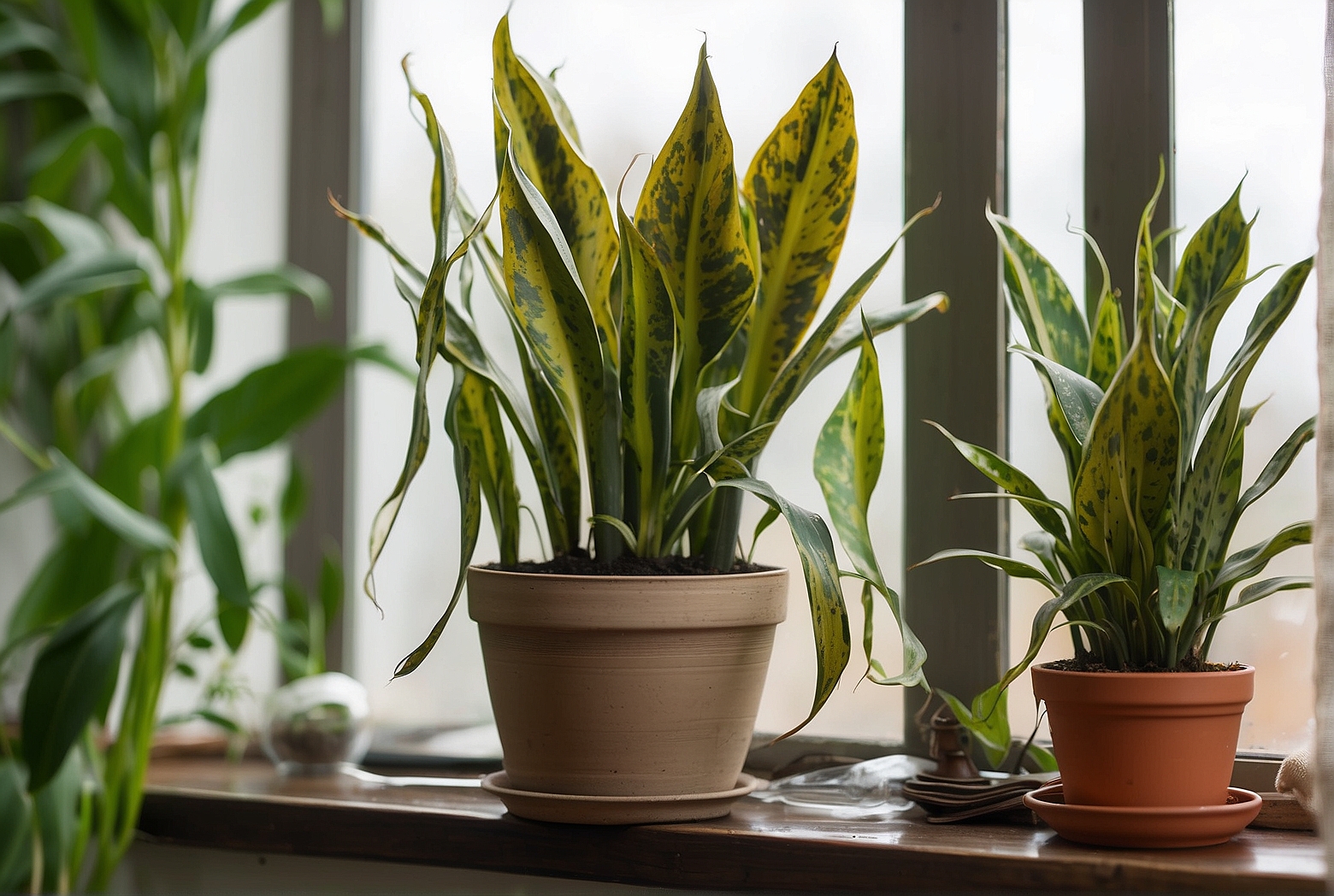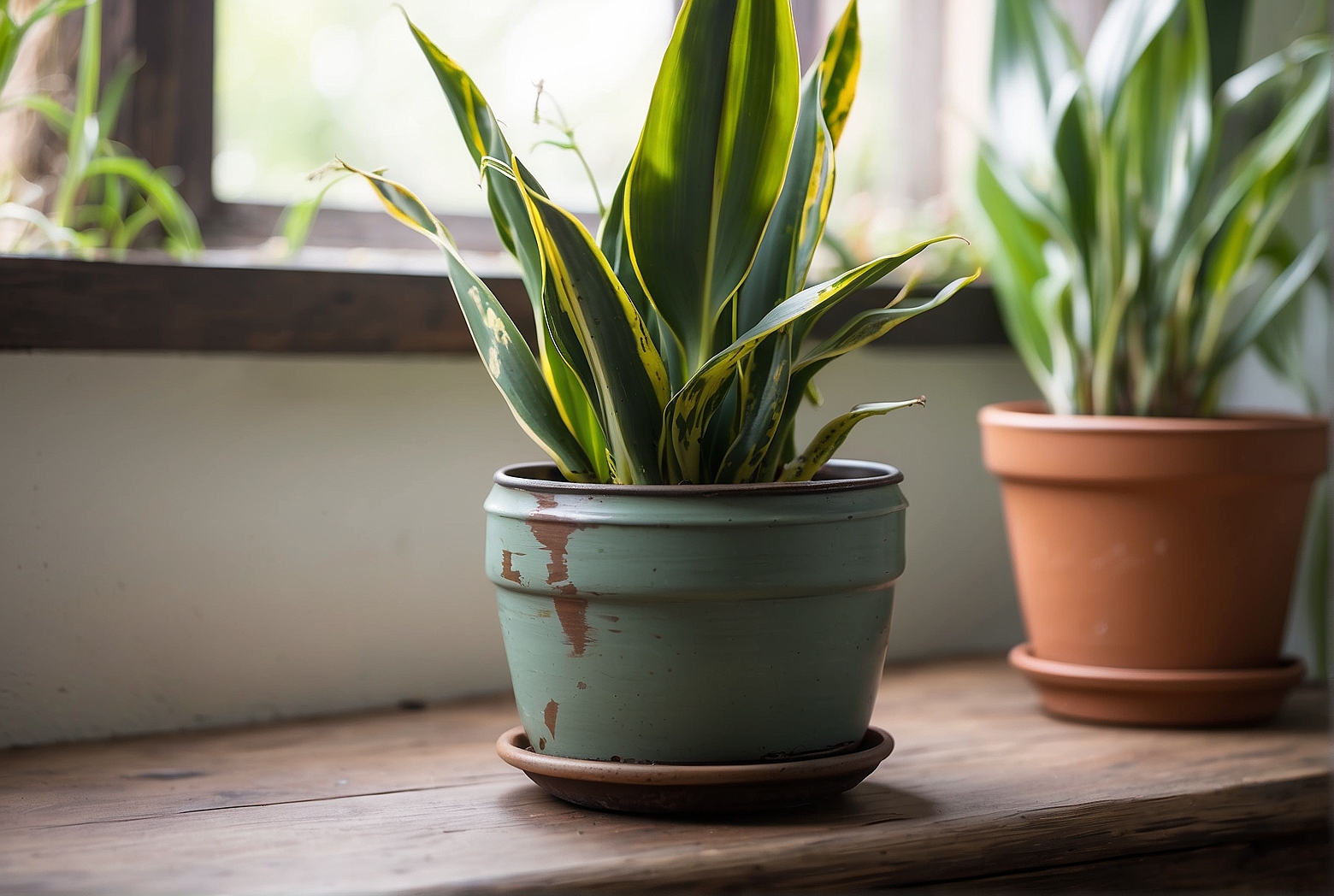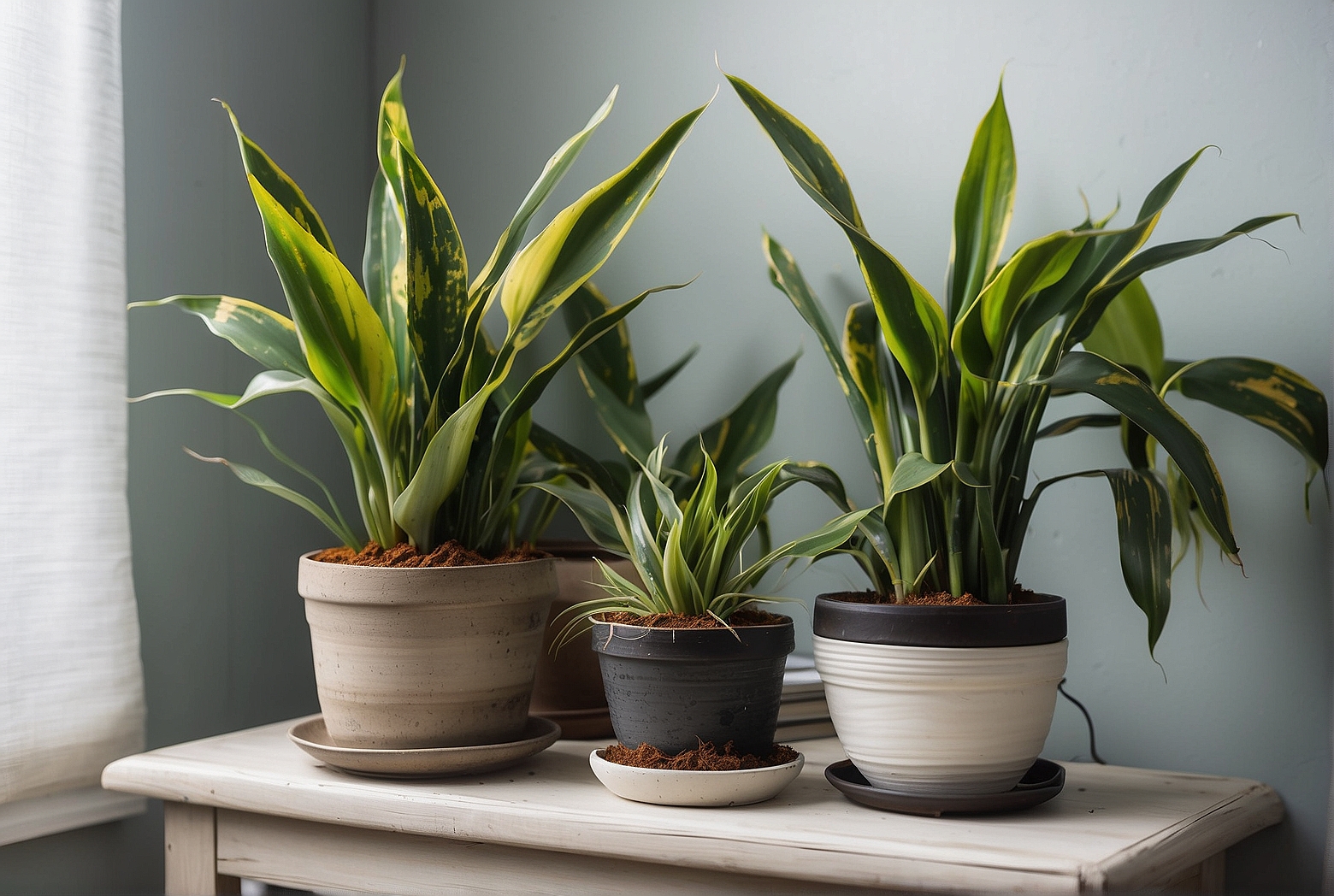Last Updated on April 15, 2024 by Tony Manhart
Are you worried about your snake plant drooping? Don’t fret! This article will provide you with the essential information to understand why your snake plant may be drooping and how to revive it. Discover the common causes that can lead to drooping leaves, such as overwatering or inadequate sunlight, and learn simple yet effective solutions to restore your gorgeous snake plant back to its upright and healthy state. With our friendly guidance, you’ll soon be able to revive your snake plant and enjoy its striking beauty once again.
Watering Issues
Overwatering
Overwatering is one of the most common problems faced by plant owners, and it can lead to a drooping snake plant. When you overwater your snake plant, the roots become saturated, causing them to suffocate and rot. This prevents the roots from absorbing oxygen and nutrients, leading to the drooping appearance of the leaves. To avoid overwatering, make sure to let the top inch of the soil dry out before watering again and ensure that your pot has proper drainage.
Underwatering
On the other hand, underwatering can also cause your snake plant to droop. When you consistently underwater your plant, it becomes dehydrated and lacks the necessary moisture to support healthy growth. This can result in wilting leaves and a general lack of vitality. To prevent underwatering, regularly check the moisture level in the soil and water your snake plant when the top inch feels dry to the touch.
Improper Watering Technique
Even if you follow the recommended watering schedule, improper watering technique can still lead to a drooping snake plant. For example, watering the leaves instead of the soil can cause fungal diseases and damage the foliage. It’s important to water the soil directly and avoid getting water on the leaves. Additionally, using cold water straight from the tap can shock the plant’s roots. To avoid such issues, use room temperature water and direct it towards the soil at the base of the plant.

Lighting Problems
Insufficient Light
Snake plants thrive in bright, indirect light, and a lack of sufficient light can contribute to drooping leaves. When a snake plant doesn’t receive enough light, it may stretch towards the nearest light source, causing the leaves to become weak and droop. To remedy this issue, place your snake plant in a well-lit area, away from direct sunlight. If natural light is limited, you can supplement with artificial grow lights to provide adequate illumination.
Excessive Direct Sunlight
While snake plants can tolerate some direct sunlight, excessive exposure to intense sunlight can cause their leaves to droop. Too much direct sunlight can lead to sunburn, resulting in brown spots or patches on the leaves and overall wilting. To protect your snake plant from excessive sunlight, place it in a location where it receives bright, indirect light for most of the day. If you notice signs of sunburn, gradually move the plant to a slightly shadier spot.
Temperature and Humidity
Extreme Temperatures
Snake plants prefer moderate temperatures and are sensitive to extreme temperatures. When subjected to excessively hot or cold temperatures, snake plants can experience stress, which may cause the leaves to droop. Extremely hot temperatures can cause the soil to dry out quickly, leading to water deficiency and subsequent wilting. On the other hand, extremely cold temperatures can damage the plant’s cells and disrupt its normal physiological processes. To prevent temperature-related issues, keep your snake plant in a room with temperatures between 70-90°F (21-32°C), avoiding drafts and sudden temperature fluctuations.
Unsuitable Humidity Levels
Snake plants are adaptable to a wide range of humidity levels, but extreme variations can affect their overall health and cause drooping leaves. Low humidity levels are more likely to be problematic, especially during dry winter months when indoor heating reduces humidity. This can result in moisture loss from the leaves and lead to drooping. To counteract low humidity, you can use a humidifier, place a tray of water near the plant to increase moisture, or mist the leaves occasionally. However, avoid misting excessively, as it can create conditions favorable for fungal diseases.

Nutritional Deficiencies
Lack of Nitrogen
A lack of nitrogen can manifest as drooping leaves with pale green or yellow discoloration. Nitrogen is essential for healthy leaf and stem growth, and a deficiency can stunt the overall growth and vigor of your snake plant. To address nitrogen deficiency, fertilize your snake plant with a balanced, nitrogen-rich fertilizer according to the package instructions. Additionally, adding organic matter, such as compost or well-rotted manure, to the soil can help increase nitrogen levels naturally.
Lack of Potassium
Potassium deficiency is often characterized by weak, drooping leaves that may exhibit yellowing or browning along the edges. Potassium is crucial for plant metabolism, water regulation, and disease resistance. To alleviate potassium deficiency, incorporate a potassium-rich fertilizer into your snake plant’s care routine. Additionally, using a well-balanced potting mix that contains adequate amounts of potassium can help prevent deficiencies in the long run.
Lack of Phosphorus
Phosphorus deficiency can cause stunted growth, weak stems, and drooping leaves. As an essential nutrient for energy transfer and root development, phosphorus plays a crucial role in maintaining healthy plants. To address phosphorus deficiency, use a fertilizer specifically formulated to boost phosphorus levels in your snake plant. However, it’s important not to over-apply phosphorus, as excessive amounts can lead to nutrient imbalances and may have negative effects on overall plant health.
Lack of Micronutrients
In addition to the major macronutrients mentioned above, snake plants also require various micronutrients for optimum growth. Micronutrient deficiencies can result in drooping leaves, chlorosis (yellowing of leaves), and overall poor health. To ensure your snake plant has access to all necessary micronutrients, consider using a well-rounded, complete fertilizer that contains a balanced blend of micronutrients. Additionally, regularly inspect the leaves for any signs of nutrient deficiencies and address them promptly with appropriate fertilization or soil amendments.
Pests and Diseases
Root Rot
Root rot is a common problem caused by overwatering and poorly drained soil. It occurs when the roots become waterlogged and are unable to receive sufficient oxygen, leading to their decay and eventual death. As the roots deteriorate, the leaves of a snake plant may droop and show signs of rot or discoloration. To prevent root rot, ensure your snake plant is potted in well-draining soil and only water when the top inch of soil is dry. If root rot has already set in, it may be necessary to repot the plant, removing any affected roots and treating with a fungicide formulated for root rot.
Spider Mites
Spider mites are tiny pests that can infest snake plants, sucking sap from the leaves and causing damage. As the infestation progresses, the leaves may droop, turn yellow, or develop a stippled appearance. To control spider mites, regularly inspect your snake plant for any signs of infestation and isolate affected plants if necessary. Use a gentle spray of water or a horticultural oil spray to help eliminate spider mites. Additionally, keeping the humidity levels up will deter spider mites, as they prefer dry conditions.
Mealybugs
Mealybugs are another common pest that can impact the health of your snake plant. These small, cotton-like insects feed on plant sap and can cause wilting and drooping leaves. In severe infestations, they can weaken the plant and lead to stunted growth. To combat mealybugs, manually remove them with a cotton swab dipped in rubbing alcohol or use a horticultural soap or neem oil spray. Regularly inspect your snake plant for signs of these pests, especially in hard-to-reach areas such as leaf axils and undersides.
Scale Insects
Scale insects are armored pests that attach themselves to the stems and foliage of plants, including snake plants. As they feed on the plant’s sap, they can cause wilting and drooping leaves. To control scale insects, gently scrape them off with a cotton swab or soft brush. You can also use an insecticidal soap or neem oil spray to eliminate the pests. Regularly inspect your snake plant for any signs of scale insects and take prompt action to prevent further infestation.
Root Issues
Root-bound
When a snake plant becomes root-bound, its roots become densely packed within the pot, restricting their growth and ability to absorb water and nutrients. This can lead to drooping leaves as the plant struggles to sustain itself. To address root-bound issues, carefully remove the snake plant from its pot and gently untangle the roots. Trim any circling or tangled roots and repot the plant in a container that provides ample space for root growth.
Root Damage or Decay
Root damage from physical trauma or disease can also result in drooping leaves. Accidental damage from repotting, rough handling, or overzealous watering can harm the delicate root system of a snake plant. Additionally, diseases such as root rot can cause the roots to decay, limiting their ability to function properly. Prevent root damage by handling your snake plant with care and maintaining proper watering practices. If root decay has already occurred, assess the severity of the damage and take appropriate measures, such as repotting in fresh, well-draining soil.
Pot and Soil Problems
Inadequate Drainage
Poor drainage is a common issue that can lead to waterlogged soil and root rot. When excess water accumulates in the pot and cannot drain properly, it can suffocate the roots and cause leaves to droop. To ensure adequate drainage, choose a pot with drainage holes and use a well-draining potting mix specifically formulated for snake plants. Avoid using heavy soils or containers without drainage holes, as they can trap excess water.
Compacted Soil
Compacted soil prevents proper aeration and drainage, leading to waterlogging and root problems. Over time, the soil in potted plants can become compacted, depriving the roots of essential oxygen and nutrients. This can result in drooping leaves and overall poor plant health. To prevent soil compaction, regularly loosen the top layer of soil during routine care. Additionally, consider repotting your snake plant every few years with fresh potting mix to ensure optimal soil conditions.
Poor Soil Quality
Snake plants thrive in well-draining, nutrient-rich soil. Poor soil quality can impede water absorption and nutrient uptake, leading to drooping leaves and overall poor growth. If your snake plant is consistently struggling, consider amending the soil with organic matter such as compost or well-rotted manure. This can improve the soil structure, enhance drainage, and provide essential nutrients for healthy plant growth.
Environmental Stress
Air Drafts
Exposure to cold or dry air drafts can stress your snake plant and cause the leaves to droop. Drafts can disrupt the plant’s transpiration process, leading to water loss and subsequent wilting. To protect your snake plant from air drafts, avoid placing it near air conditioning vents, open windows, or doors. If your snake plant is sensitive to drafts, consider moving it to a more sheltered location where it can enjoy a stable and comfortable environment.
Physical Damage
Accidental physical damage to the leaves or stems of a snake plant can result in drooping and wilting. This can occur due to rough handling, pests, or even pets with a curious nature. To minimize physical damage, handle your snake plant with care, especially when repotting or moving it. If you have pets, keep your snake plant out of their reach or consider using barriers or deterrent sprays to protect it from accidental damage.
Transplant Shock
Transplant shock can occur when a snake plant is repotted or moved to a new location, resulting in drooping leaves and temporary decline. The stress of being uprooted can cause the plant to focus its energy on root development, leading to a loss of foliage. To minimize transplant shock, ensure that the new pot and soil are prepared before transplanting, and avoid damaging the roots during the process. Provide appropriate care, including proper watering and light exposure, during the recovery period to help your snake plant regain its vitality.
Age and Growth
Natural Aging and Decline
As with any living organism, snake plants go through a natural aging process. Over time, older leaves may yellow, droop, or die off as new growth emerges from the center of the plant. This is a normal part of the snake plant’s lifecycle and should not be cause for concern. Simply trim away any dead or dying leaves to maintain the plant’s overall appearance and encourage healthy new growth.
Stunted Growth
If your snake plant’s growth appears stunted and the leaves are drooping, it may indicate underlying issues such as improper care or inadequate environmental conditions. Inconsistent watering, poor lighting, or nutrient deficiencies can all contribute to stunted growth. Assess the overall care routine and address any deficiencies to promote healthy growth. Remember that snake plants are generally slow-growing, so patience is key when expecting noticeable growth.
Cultural Factors
Mishandling or Improper Care
Sometimes, a drooping snake plant can be a result of mishandling or improper care practices. Rough handling, incorrect watering habits, or neglecting essential plant requirements can all contribute to the decline and drooping leaves. To ensure the well-being of your snake plant, familiarize yourself with its specific care requirements and provide consistent and attentive care. Avoid overzealous care, such as excessive watering or over-fertilization, as this can also harm the plant.
Inappropriate Plant Placement
Incorrect placement of your snake plant can lead to drooping leaves and overall decline. Placing your snake plant in a location that does not meet its light, temperature, and humidity needs can cause stress and wilting. To determine the best placement for your snake plant, consider its natural habitat requirements. Snake plants prefer bright, indirect light, moderate temperatures, and moderate humidity. By providing the right conditions, you can ensure optimal health and prevent drooping leaves.
In conclusion, a drooping snake plant can be a result of various factors, ranging from watering issues and lighting problems to nutritional deficiencies, pests, and diseases. It is important to carefully assess and address each potential cause to restore your snake plant’s health and vitality. By providing the right conditions and attentive care, you can help your snake plant thrive and maintain its beautiful upright appearance.
Tony Manhart is a passionate gardener who has been tending to gardens for over 20 years. He takes pride in creating beautiful outdoor spaces with plants, trees, and shrubs that can thrive in any environment. He loves to share his knowledge with others and has taught classes on gardening basics and advanced techniques. He is committed to sustainability, using natural and organic methods to create and maintain gardens. He also works with local organizations to create green spaces for communities. When he’s not gardening, Tony enjoys hiking, reading, and spending time with his family.


